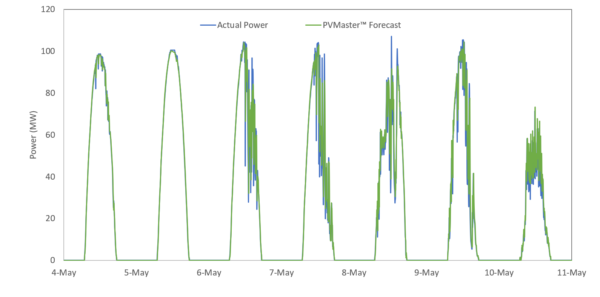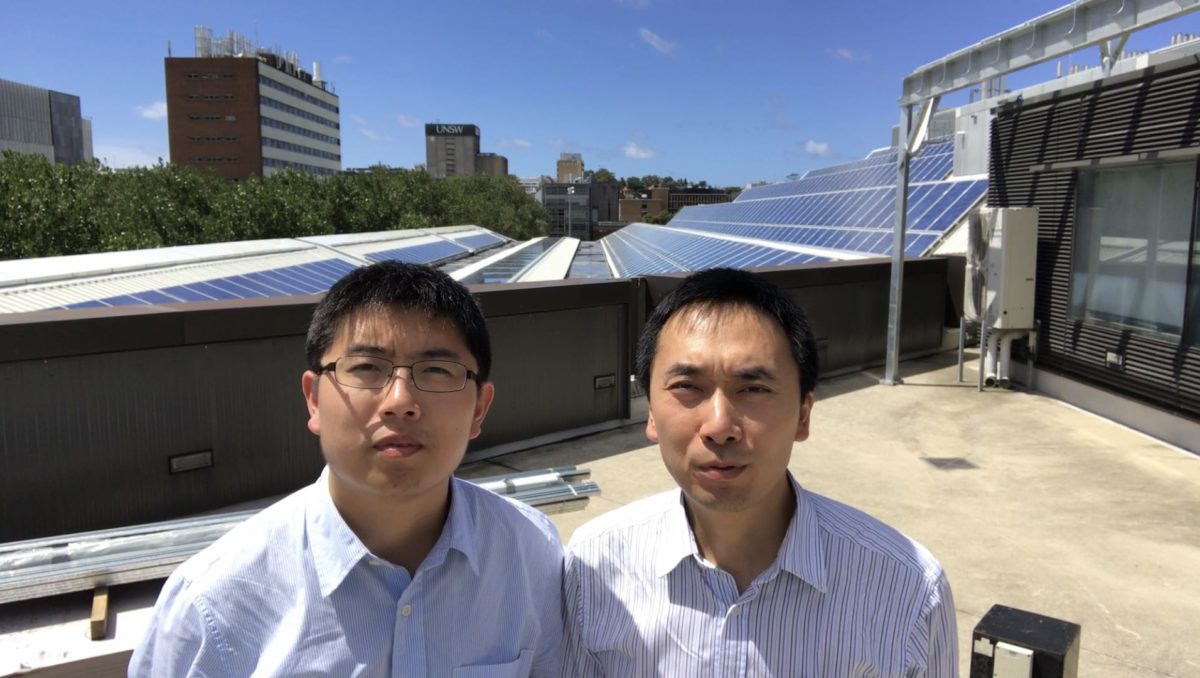Dr Yang Li and Dr Zi Ouyang bring years of R&D and the insights they developed as PhDs at UNSW’s famous School of Photovoltaic and Renewable Energy Engineering to the gnarly problem of accurately forecasting solar-farm output. After four months in the 2020 intake of EnergyLab’s ScaleUp program, they’re talking to angel investors and about to begin a pilot of their precise PVMaster software.
The world of solar forecasting in Australia exploded in 2018 when the Australian Renewable energy Agency (ARENA) and the Australian Energy Market Operator (AEMO) announced a $9 million program to fund and test projects that could enhance the short-term forecasting of output from solar and wind farms.
“Accurate short-term forecasts are essential for balancing supply and demand, and avoiding grid instability,” AEMO Managing Director and CEO Audrey Zibelman said at the time.
With the entry of more variable renewables to the market, AEMO needed to be able to anticipate what would happen to solar output if clouds rolled over, or to wind output if winds died or changed.
AEMO has traditionally provided its own central forecast.
Then CEO of ARENA, Ivor Frischknecht, set the scene facing renewable-energy developers, “At present, wind and solar farms can be disadvantaged if their available output doesn’t match the central forecast. If the forecasts are too low, wind and solar farms are restricted in how much electricity they are paid to produce. If forecasts are too high, the wind or solar farm may be obliged to pay for the cost of stabilising, which increases the price of electricity and is ultimately passed on.”
The ARENA forecasting round stimulated interest in providing solutions that would allow solar farms to accurately self-forecast their output in advance of short-term changes in weather conditions, and thereby save themselves up to $500,000 per annum in “causer pays” charges when their output did not match the central forecast, and to more profitably operate in the markets used to balance such discrepancies, known as the Frequency Control Ancillary Services (FCAS) markets.
The 11 projects that participated in the forecasting round would use a range of technologies including onsite cameras that record cloud movements, wind-speed radar, data from Japanese weather satellites, infrared imaging to detect cloud movements before dawn, and machine-learning algorithms.
Li and Ouyang’s company, Renewable Energy Laboratory (REL), was not among them, but the co-founders developed their PVMaster technology in the knowledge that there would be many market opportunities.
The competitive edge?
Like other forecasting companies, such as Proa Analytics, REL accesses satellite images to extract short-term weather forecasts, but says Li, “We take advantage of recent, very exciting developments in image realisation and processing developed by the application of artificial intelligence.”
REL’s greatest distinguishing factor, lies in how the two scientists apply their understanding of solar cell, panel and module construction to accurately forecast solar output according to the angle of the sun at different times of day and the spectrum of light at different times (reddish in the mornings, bright white around the middle of the day…).
“Because we learned so much about solar PV systems during our studies at UNSW, we know the optics and electrical properties of each single layer in a solar panel; how light shining on the panel will be reflected or refracted into the glass, and then through the anti-reflection layer on the solar cell and then into the silicon,” Li tells pv magazine.
He says their PVMaster technology offers particular advantages in calculating additional differences in panel features and installation, such as bifacial construction, tracking systems or additions such as light-redirecting film covering the cell ribbon. That is, PVMaster can take each variable factor into detailed account.
“We work with a physical model of the solar farm that is extremely accurate,” says Li. Because it is not heavily reliant on historical datasets for machine learning, “we need less training data, so we are better for new solar farms,” than some other forecasting systems, he says.

Image: Renewable Energy Labs
Helping developers make better bets on the FCAS market
Along the journey to commercialisation, REL has applied aspects of its technology to benchmarking solar performance across portfolios of commercial rooftop installations, and to smart-inverter technologies for residential solar.
For one customer, which designed a battery/inverter package, REL integrated its forecasting into the smart inverter, which allowed it to manage the battery storage according to anticipated weather conditions: if the next day were forecast to be sunny, for example, the system would allow the battery to be drained by domestic appliances overnight, in anticipation of charging up tomorrow on solar.
It’s the kind of application that Li hopes to offer solar farms in the long term. Ultimately, says Li, “We would like to apply our expertise in data analytics and time-series forecasting into a wider range of digital infrastructures in the energy sector, like facilitating smarter trading and optimising the battery management system for FCAS bid and tariff arbitrage, as more renewables and storage are to be connected to the grid.”
For the time being, the REL duo is focused on “securing our competitive advantage” in forecasting accuracy, and delivering results from its first solar-farm pilot.
A tailored leg up for clean-tech entrepreneurs
The EnergyLab program has made good use of virtual communications during the Covid-19 pandemic, helping it’s 2020 cohort of six late-stage clean-tech startups with industry networking, mentoring and training in sales and marketing techniques specific to clean-tech products.
Says James Tilbury, CEO of EnergyLab, “Clean energy startups face a number of barriers that are a bit different to a typical software startup. There are regulatory barriers, capital intensity and geographic constraints. We’ve re-examined every aspect of an acceleration program, and tailored it towards what clean energy startups need.” This year, EnergyLab programs have been supported by $480,000 in funding from ARENA.
Li says he is excited about the feedback REL has so far received from EnergyLab’s clean-tech-focused group of angel investors.
And although competition will be fierce in the forecasting environment, he’s heartened by the fact that solar farms can test forecasting from two suppliers before deciding on their preferred technology.
Overall, he says, “If we can make this forecasting better — not only from our company, but from Solcast and Proa Analytics — as more and more solar farms use better forecasting, AEMO can dispatch more efficiently and they can make the grid accommodate more renewables without upgrading infrastructure.”
This content is protected by copyright and may not be reused. If you want to cooperate with us and would like to reuse some of our content, please contact: editors@pv-magazine.com.









1 comment
By submitting this form you agree to pv magazine using your data for the purposes of publishing your comment.
Your personal data will only be disclosed or otherwise transmitted to third parties for the purposes of spam filtering or if this is necessary for technical maintenance of the website. Any other transfer to third parties will not take place unless this is justified on the basis of applicable data protection regulations or if pv magazine is legally obliged to do so.
You may revoke this consent at any time with effect for the future, in which case your personal data will be deleted immediately. Otherwise, your data will be deleted if pv magazine has processed your request or the purpose of data storage is fulfilled.
Further information on data privacy can be found in our Data Protection Policy.